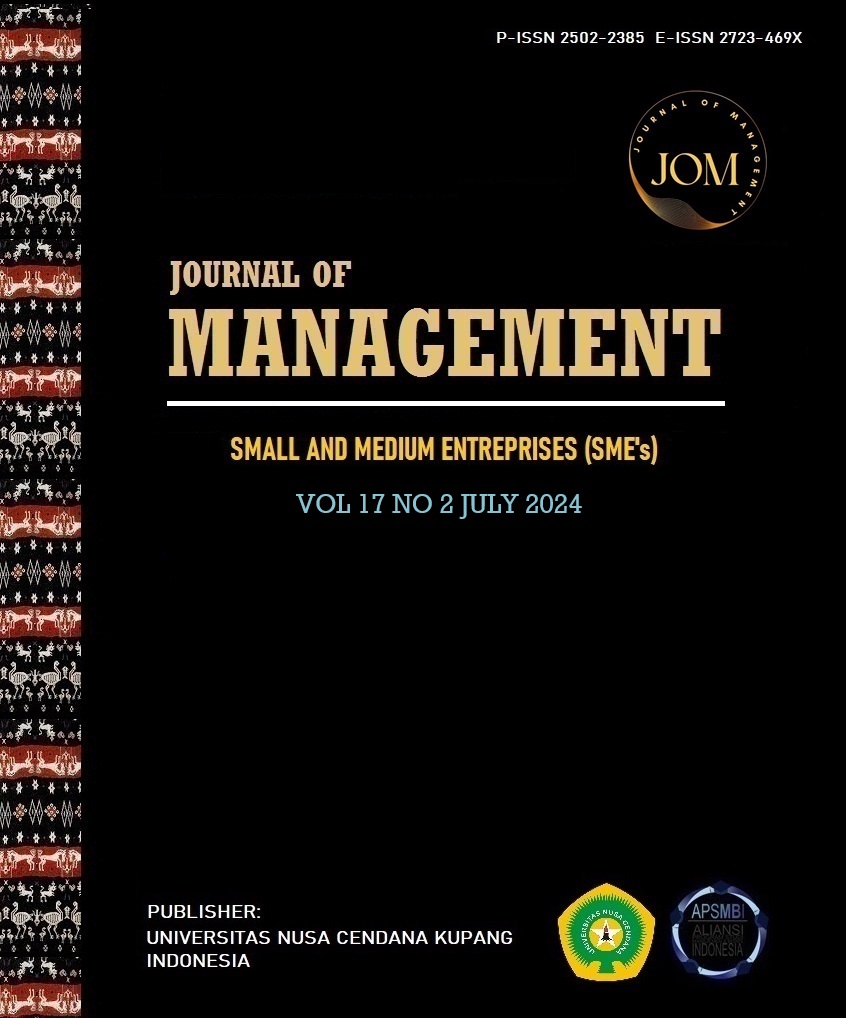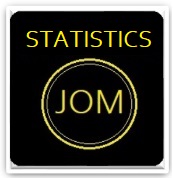THE EFFECT OF EDUCATION LEVEL, INVESTMENT, AND MINIMUM WAGE ON THE ACTIVE LABOR FORCE OF KERINCI REGENCY
Abstract
Indonesia has a rapid population growth but it is not matched by employment opportunities for the labour force. Increased productivity will run well if accompanied by the appropriate Regional Minimum Wage (UMR). The Regional Minimum Wage is the minimum standard applied by businesses in paying wages to employees, employees, or labourers who work in their business. The Regional Minimum Wage always increases every year, which is applied to increase the workforce's desire to be able to work. This research will examine the effect of education level, investment, and minimum wage on active labour. The research method used in this study is quantitative research. The type of data source uses secondary data collected through the Central Bureau of Statistics report. The data analysis technique uses path analysis which is processed through the SPSS version 23 application with a total of 140 respondents. This research was conducted in Kerinci Regency with research time from August 2023 - October 2023. The results of this study found that there is an effect of education level, investment, and minimum wage on the active labour force in Kerinci Regency.
Keywords: Active Labour Force; Education Level; Investment; Minimum Wage
Downloads
References
Barca, F., McCann, P., & Rodríguez‐Pose, A. (2012). The case for regional development intervention: place‐based versus place‐neutral approaches. Journal of Regional Science, 52(1), 134–152. https://doi.org/https://doi.org/10.1111/j.1467-9787.2011.00756.x
Cleasby, I. R., & Nakagawa, S. (2011). Neglected biological patterns in the residuals: a behavioural ecologist’s guide to co-operating with heteroscedasticity. Behavioral Ecology and Sociobiology, 65, 2361–2372.
https://doi.org/https://doi.org/10.1007/s00265-011-1254-7
Clemens, J., Kahn, L. B., & Meer, J. (2018). The minimum wage, fringe benefits, and worker welfare (No. w24635). National Bureau of Economic Research. https://doi.org/https://doi.org/10.3386/w24635
Filiasari, A., & Setiawan, A. H. (2021). Pengaruh Angkatan Kerja, Upah, PDRB, dan Pendidikan Terhadap Tingkat Pengangguran di Provinsi Banten Tahun 2002-2019. Diponegoro Journal of Economics, 9(2), 215–231.
https://doi.org/https://doi.org/10.31002/rep.v4i2.1234.
Gindling, T. H., & Terrell, K. (2007). The effects of multiple minimum wages throughout the labor market: The case of Costa Rica. Labour Economics, 14(3), 485–511. https://doi.org/https://doi.org/10.1016/j.labeco.2006.01.004
Hidayah, A. (2022). Pengaruh Inflasi dan Investasi terhadap Tingkat Pengangguran di Indonesia. Independent: Journal of Economics, 2(3), 160–168. https://doi.org/https://doi.org/10.26740/independent.v2n3.p160-168
Hitka, M., Kucharčíková, A., Štarchoň, P., Balážová, Ž., Lukáč, M., & Stacho, Z. (2019). Knowledge and human capital as sustainable competitive advantage in human resource management. Sustainability, 11(8), 4985.
https://doi.org/https://doi.org/10.26740/independent.v2n3.p160-168
Jaarsma, T., Årestedt, K. F., Mårtensson, J., Dracup, K., & Strömberg, A. (2009). The European Heart Failure Self‐care Behaviour scale revised into a nine‐item scale (EHFScB‐9): a reliable and valid international instrument. European Journal of Heart Failure, 11(1), 99-105.
https://doi.org/https://doi.org/10.1093/eurjhf/hfn007
Kleven, T. A. (2008). Validity and validation in qualitative and quantitative research. Nordic Studies in Education, 28(3), 219-233.
https://doi.org/https://doi.org/10.18261/issn1891-5949-2008-03-05
Krismiyati. (2017). Pengembangan Sumber Daya Manusia 7 dalam Meningkatkan Kualitas Pendidikan di SD Negeri Inpres Angkasa Biak. Jurnal Office, 3(2). https://doi.org/https://doi.org/10.26858/jo.v3i1.3459
Kurniawan, A. B. (2011). Analisis Pengaruh Pertumbuhan Ekonomi, Upah Minimum, dan Investasi terhadap Jumlah Pengangguran di Kabupaten Gesik. Jurnal Ilmiah. https://doi.org/https://doi.org/10.24843/eeb.2022.v11.i04.p02
Larasati, D., Supriadi, D., Alfarisy, M. F., & Sambodo, H. (2022). The Effect of Minimum Wage on Employment Opportunity with Quality of Human Resources as Moderating Variables in Central Java. International Journal of Social Science and Education Research Studies, 2(9).
https://doi.org/https://doi.org/10.55677/ijssers/v02i09y2022-01
Natalia, D., Sutisna, N., & Farunik, C. G. (2020). The Influence of Price and Quality of Products on The Purchase Decision of Bread Products. ECo-Fin. 2(3), 146–151. https://doi.org/https://doi.org/10.54076/juket.v1i1.47
Oscar I., Olvera A., B. D. Z. (2019). Heteroskedasticity in Multiple Regression Analysis: What it is, How to Detect it and How to Solve it with Applications in R and SPSS. Education Resouces Informatiom Center, 24(1).
https://doi.org/https://doi.org/10.22596/2019.0401.21.49
Polkinghorne, D. E. (2005). Language and meaning: Data collection in qualitative research. Journal of Counseling Psychology, 52(2), 137.
https://doi.org/https://doi.org/10.1037/0022-0167.52.2.137
Roseland, M. (2000). Sustainable community development: integrating environmental, economic, and social objectives. Progress in Planning, 54(2), 73–132. https://doi.org/https://doi.org/10.1016/s0305-9006(00)00003-9
Rosopa, P. J., Schaffer, M. M.& Schroeder, A. N. (2013). Sustainable community development: integrating environmental, economic, and social objectives. Progress in Planning, 54(2), 73–132.
https://doi.org/https://doi.org/10.1037/a0032553
Saputra, G. B. (2023). Pengaruh Leverage, Profitabilitas, Likuiditas dan Free Cash Flow terhadap Nilai Perusahaan Manufaktur yan Terdaftar di Bursa Efek Indonesia 2018-2022 (Doctoral dissertation, Universitas Islam Indonesia). https://doi.org/https://doi.org/10.31575/jp.v4i2.278
Sihotang, H. (2023). Metode penelitian kuantitatif.
https://doi.org/https://doi.org/10.35542/osf.io/4f5b7
Suharlina, H. (2020). Pengaruh Investasi, Pengangguran, Pendidikan dan Pertumbuhan Ekonomi Terhadap Kemiskinan serta Hubungannya dengan Kesejahteraan Masyarakat Kabupaten/Kota di Provinsi Kalimantan Barat. In Prosiding Seminar Akademik Tahunan Ilmu Ekonomi Dan Studi Pembangunan, 56(72). https://doi.org/https://doi.org/10.24843/eep.2022.v11.i06.p11

 Heppy Syofya(1*)
Heppy Syofya(1*)



